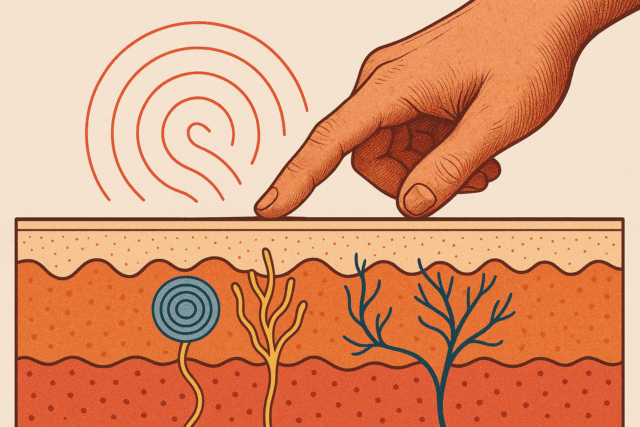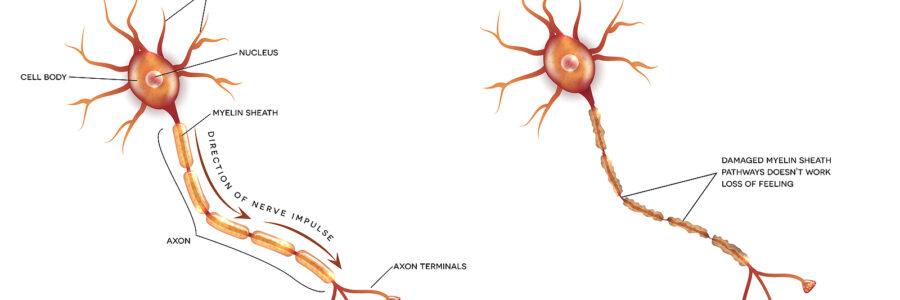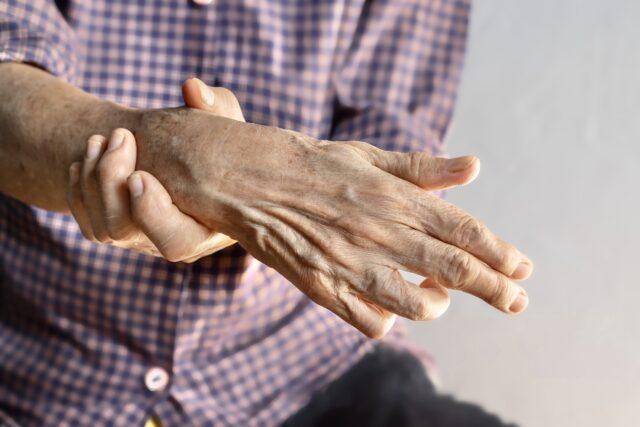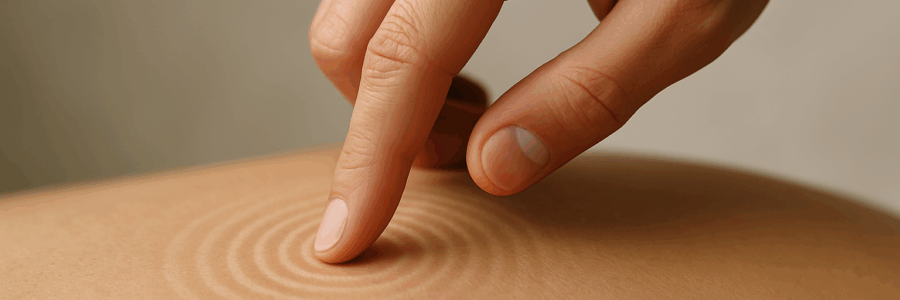 How Human Connection Begins with Skin-to-Skin Contact –
How Human Connection Begins with Skin-to-Skin Contact –
Touch is our first sense—the earliest to develop in the womb and the last to fade as we age. It connects us to the world, grounds us in our physical bodies, and shapes our emotional and social lives in profound ways. From a mother’s caress to a therapeutic massage, touch has the power to heal, soothe, and bond. But what does science say about this primal form of communication?
In this post, we’ll explore the science of touch: how it works, why it’s essential to our well-being, and how therapeutic touch (like massage therapy) taps into a deep biological system that benefits our bodies and minds.
1. The Biology of Touch: How the Body Feels
At the core of touch is our somatosensory system—a vast network of nerve endings, receptors, and brain regions that processes tactile information. This system can distinguish between pressure, temperature, texture, vibration, and pain.
Key Components:
-
Mechanoreceptors in the skin (like Merkel cells, Meissner’s corpuscles, and Pacinian corpuscles) detect different kinds of pressure and motion.
-
Thermoreceptors detect changes in temperature.
-
Nociceptors are sensitive to pain stimuli.
-
C-tactile afferents—a special class of nerves found primarily in hairy skin—respond specifically to gentle, slow touch, like a stroke or caress. They communicate not just sensation, but emotional context.
These signals are transmitted through the spinal cord to the brain, where areas like the somatosensory cortex and insula process them. The insula, in particular, links touch to emotion—highlighting that touch isn’t just a physical experience but a deeply emotional one
2. Touch and the Brain: Emotional Resonance and Hormonal Responses
One of the most fascinating aspects of touch is its ability to regulate emotions and physiology. A single hug or handhold can trigger a cascade of hormonal responses:
-
Oxytocin: Often dubbed the “love hormone,” oxytocin is released during affectionate touch. It promotes bonding, trust, and social connection.
-
Cortisol: Gentle touch has been shown to reduce levels of cortisol, the primary stress hormone.
-
Serotonin and dopamine: These feel-good neurotransmitters are also released, lifting mood and promoting a sense of well-being.
Functional MRI studies have shown that supportive touch reduces activity in the brain’s fear center (the amygdala) and increases activity in regions associated with reward and safety.
3. Developmental Importance: Why Babies Need Touch to Thrive
Touch is critical for early development. Infants who receive consistent, affectionate touch:
-
Gain weight more quickly
-
Cry less
-
Sleep better
-
Show better neurological development
Pioneering research in neonatal care has shown that “kangaroo care“ (skin-to-skin contact) between preterm infants and their parents improves survival rates and long-term health outcomes. The tactile experience provides comfort, regulates heart rate and temperature, and fosters bonding.
Conversely, children raised in environments with little physical contact (such as orphanages) often show signs of developmental delays, emotional detachment, and impaired cognitive function—a stark reminder of how essential touch is to human growth.
4. Therapeutic Touch: Massage, Healing, and Health
Massage therapy is a powerful application of intentional, structured touch—and its benefits are backed by decades of research.
Proven Benefits of Massage:
-
Pain Reduction: Particularly effective for chronic pain conditions like fibromyalgia, arthritis, and lower back pain.
-
Improved Circulation and Lymph Flow: Encourages blood flow and supports immune function.
-
Stress Relief: Regular massage reduces anxiety and promotes relaxation by decreasing cortisol and increasing serotonin.
-
Enhanced Sleep: Promotes deeper, more restorative rest.
-
Mental Health Support: Massage is increasingly recognized as a complementary therapy for depression, PTSD, and anxiety disorders.
Massage therapists leverage an intuitive understanding of the body’s need for safety, rhythm, and presence—activating the parasympathetic nervous system (the “rest and digest” state) and offering clients a path to self-regulation and healing.
5. Social Touch: The Glue of Human Relationships
We often underestimate the social and cultural power of touch. A handshake, a pat on the back, or a hug all convey messages that words sometimes can’t.
In couples, regular touch is linked to:
-
Greater relationship satisfaction
-
Reduced conflict
-
Increased intimacy and empathy
Even in professional settings, appropriate physical gestures like a reassuring touch can improve cooperation and morale.
However, cultural norms around touch vary significantly. What’s comforting in one context may be unwelcome in another. Understanding boundaries and consent is essential to respectful, healing touch.
6. The Crisis of Touch Deprivation
In our increasingly digital and socially distanced world, many people are experiencing touch deprivation. This can lead to:
-
Increased loneliness and depression
-
Heightened anxiety
-
A weakened immune system
This phenomenon, sometimes referred to as “skin hunger,” is a real biological need—our bodies crave contact, not just socially, but neurologically.
The pandemic further underscored how vital safe touch is to our well-being. In its absence, many turned to pets, self-massage tools, and therapeutic services to fulfill that need.
Conclusion: Touch as Medicine, Communication, and Connection
The science of touch reveals a simple truth: we are wired to connect through our skin. From infancy to old age, touch shapes who we are, how we heal, and how we relate to others. It’s more than a sensation—it’s a language, a medicine, and a vital part of what makes us human.
Whether you’re a parent, a caregiver, a therapist, or simply someone looking to better understand human connection, embracing the power of touch can open doors to empathy, healing, and deeper relationships.
Suggested Further Reading:
-
Touch: The Science of the Hand, Heart, and Mind by David J. Linden
-
The Body Keeps the Score by Bessel van der Kolk
-
Articles from the Touch Research Institute at the University of Miami
For more information visit our website: www.nw-academy.com

Nerve Damage & Massage Therapy
 Understanding Massage and Its Impact on Nerve Damage:
Understanding Massage and Its Impact on Nerve Damage:
Massage therapy has long been revered for its myriad benefits, from relieving muscle tension to promoting relaxation and enhancing overall well-being. One area of particular interest is its potential impact on nerve damage. While the benefits of massage for muscle-related issues are well-documented, its effects on nerve damage require a more nuanced understanding. In this comprehensive guide, we’ll delve into the relationship between massage and nerve damage, exploring how different massage techniques can aid in nerve repair and provide relief from nerve pain.
Understanding Nerve Damage
Nerve damage, or neuropathy, can occur due to various reasons, including physical trauma, medical conditions like diabetes, infections, and exposure to toxins. Symptoms of nerve damage can range from mild tingling and numbness to severe pain and muscle weakness. Depending on the severity and cause, nerve damage can significantly impact a person’s quality of life.
How Massage Therapy Works
Massage therapy involves the manipulation of soft tissues, including muscles, tendons, and ligaments, to promote relaxation, reduce pain, and enhance overall body function. The primary mechanisms through which massage therapy exerts its effects include:
Improved Circulation: Massage enhances blood flow to the targeted areas, which can promote healing by delivering essential nutrients and oxygen to damaged tissues.
Pain Relief: Through the stimulation of sensory receptors, massage can help reduce pain by blocking pain signals to the brain.
Muscle Relaxation: By alleviating muscle tension and reducing stiffness, massage can improve mobility and decrease discomfort.
Stress Reduction: Massage promotes relaxation and reduces stress levels, which can have a positive impact on overall health and well-being.
Types of Massage Techniques
Several massage techniques can be beneficial for individuals with nerve damage. Understanding the unique characteristics of each technique can help in choosing the most appropriate therapy:
Swedish Massage: This technique involves long, gliding strokes, kneading, and circular movements. It is effective for promoting overall relaxation and improving circulation, which can be beneficial for mild nerve pain.
Deep Tissue Massage: This type focuses on deeper layers of muscle and connective tissue. It can be particularly useful for chronic pain and tension resulting from nerve damage, as it helps release deeply held tension.
Neuromuscular Therapy (NMT): Also known as trigger point therapy, NMT targets specific points of pain in the muscles, which can correspond to nerve pain. By applying pressure to these trigger points, NMT can help release tension and reduce referred pain.
Myofascial Release: This technique targets the fascia, the connective tissue surrounding muscles and nerves. By applying sustained pressure, myofascial release can help alleviate restrictions in the fascia, reducing pain and improving mobility.
Reflexology: Focusing on pressure points in the feet, hands, and ears, reflexology can stimulate nerve pathways and promote relaxation throughout the body. This can be particularly beneficial for systemic nerve conditions like peripheral neuropathy.
Massage Therapy for Specific Nerve Conditions
Different types of nerve damage may respond to massage therapy in various ways. Here are a few common conditions and how massage can help:
Carpal Tunnel Syndrome: Characterized by numbness and tingling in the hands and fingers, carpal tunnel syndrome can benefit from deep tissue massage and myofascial release to alleviate pressure on the median nerve.
Sciatica: This condition involves pain radiating along the sciatic nerve, often affecting the lower back and legs. Neuromuscular therapy and deep tissue massage can help relieve muscle tension and reduce nerve compression.
Diabetic Neuropathy: Nerve damage resulting from diabetes can cause pain and numbness in the extremities. Reflexology and gentle Swedish massage can improve circulation and provide symptomatic relief.
Post-Surgical Nerve Damage: After surgery, nerve damage can occur due to trauma or inflammation. A combination of techniques, including Swedish massage and myofascial release, can aid in the healing process and reduce scar tissue formation.
Considerations and Precautions
While massage therapy can offer significant benefits for individuals with nerve damage, it is essential to approach it with caution. Here are some important considerations:
Consultation with Healthcare Providers: Before starting massage therapy, individuals with nerve damage should consult with their healthcare providers to ensure it is safe and appropriate for their specific condition.
Qualified Massage Therapists: It is crucial to seek massage therapists who are trained and experienced in dealing with nerve-related issues. A qualified therapist can tailor the treatment to the individual’s needs and avoid exacerbating the condition.
Communication: Open communication with the massage therapist is vital. Individuals should inform their therapists about their symptoms, pain levels, and any changes in their condition to ensure the treatment is effective and safe.
Gradual Approach: Starting with gentle techniques and gradually increasing intensity can help the body adapt to the therapy and prevent any adverse reactions.
Conclusion
Massage therapy offers a promising complementary approach for managing nerve damage. By improving circulation, reducing pain, and promoting relaxation, various massage techniques can aid in the recovery process and enhance the quality of life for individuals with nerve-related conditions. However, it is essential to approach massage therapy with careful consideration and professional guidance to ensure safety and efficacy. With the right approach, massage can be a valuable tool in the journey towards nerve health and overall well-being.
For more information about how massage can benefit nerve damage contact our local massage therapy school campus.





